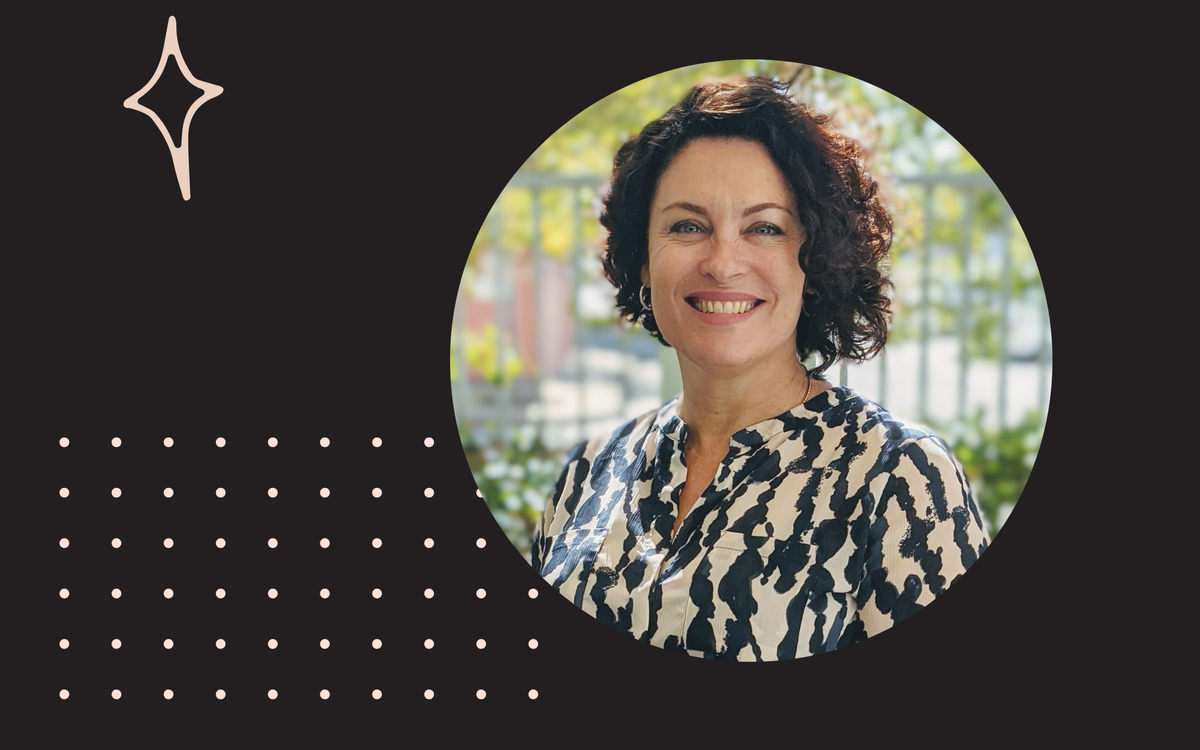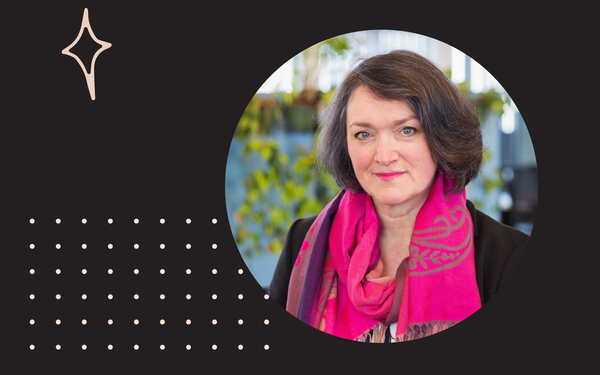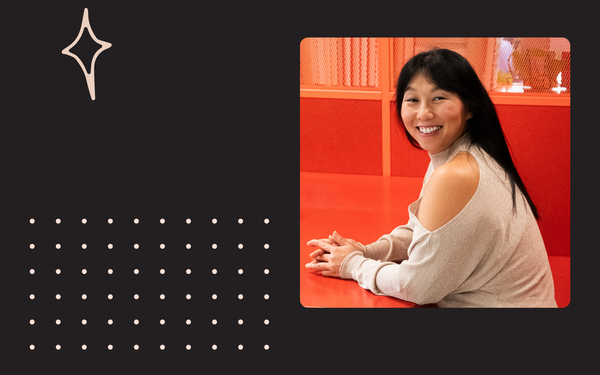Beyond the Office: How Nature-Based Therapy is Reshaping Leadership and Wellbeing

In boardrooms and corner offices across the corporate landscape, female leaders are grappling with an unprecedented convergence of complexity, pressure, and burnout. Traditional approaches to professional development and mental health support—confined to sterile meeting rooms and clinical settings—are proving inadequate for the nuanced challenges of modern leadership.
Enter a radically different paradigm: one that trades the therapist's couch for coastal boardwalks, swaps corporate retreats for creative expression in nature, and replaces quick-fix wellness initiatives with deeply integrated, sustainable practices.
For female leaders navigating complexity, clarity and energy are non-negotiable. Psychologist and nature-based therapist Michelle Saleeba's work at the intersection of psychology, creativity, and nature offers a grounded approach to sustaining both. Her practice challenges the conventional boundaries between therapy, coaching, and organizational development, proposing instead that our most profound insights emerge not from strategic planning sessions, but from the simple act of walking through nature while thinking aloud.
This isn't wellness theater or another trendy corporate perk destined for the graveyard of abandoned initiatives. It's an evidence-informed approach that recognizes what indigenous cultures have long understood: that healing, creativity, and clear thinking flourish when we reconnect with the natural world and engage our whole selves—body, mind, and spirit—in the process of growth.
This long-form Q&A goes beyond surface-level tips, offering a deeper look at the principles behind her practice and the practical ways they can be applied to work, wellbeing, and leadership. From the mechanics of walk-and-talk therapy to the organizational transformation possible when nature-based practices become embedded in company culture, Saleeba reveals how stepping outside traditional frameworks can unlock the clarity and energy that today's leaders desperately need.
1. You mention that "deep healing often begins with a single step." For readers who might be skeptical about therapy outside traditional office settings, can you walk us through what actually happens during a walk-and-talk session? What shifts do you notice in clients when they're moving through nature versus sitting in a chair?
A session might begin on a coastal boardwalk, a quiet riverside path, or a bushland trail. These are spaces I know well - consistent and chosen with care. There’s no couch, no whiteboard, no handouts. And in an age of tech-everything, there’s no recording device, no AI-generated scribe. That absence is intentional and for many people, surprisingly important.
We walk, we talk, thinking aloud in real time. That shift in setting and tone changes everything. Walking side by side, people tend to drop their guard. There’s less need to manage impressions, less pressure to perform. Conversation flows more naturally, and often more reflectively, than it might in a formal office.
Movement brings a different quality to the work. It helps settle the nervous system and creates space for thoughts and emotions to surface in a more fluid way. Clients might arrive feeling tense or disconnected and leave with a sense of calm or clarity. That shift doesn’t need to be dramatic. It builds quietly through rhythm, sensory grounding, and the natural containment of being outdoors.
Naturally, some people have questions about privacy or safety. Walk-and-talk isn’t about heading deep into the bush or disappearing off-grid. There are usually people around, but we decide together what feels right. Some clients prefer quieter paths; others don’t mind a bit of movement and energy around them. That choice is part of the process. And for women who are used to shrinking themselves to feel safe, polished or accepted, it can be quietly powerful to take up space outdoors, to be visible and still feel secure. Over time, that starts to build a kind of embodied confidence that carries back into daily life and other roles.
It’s not a one-size-fits-all model though and some presentations call for the structure of a room. But for many people, especially those feeling like it’s ground hog day in traditional therapy or coaching settings, nature offers something different, a way to move forward, literally and psychologically.
And this isn’t limited to therapy. Walk-and-talk works incredibly well in coaching and mentoring contexts too. For leaders or creatives who feel overloaded or blocked, the combination of movement and open air can unlock insight quickly. It’s less formal, but no less effective and often far more energising.
2. Your workshops pair guided walks with creative expression - crafting, journaling, reflection. For busy women who might feel they don't have time for "another wellness thing," how would you describe the practical benefits they might experience? What does nervous system regulation actually look and feel like in these settings?
It’s a fair concern, there’s no shortage of wellness offerings out there. The women I work with aren’t lacking insight or strategy; they’re often stretched thin, with limited space to integrate what they already know. So no, this isn’t about adding something extra to an already full plate! It’s about combining what’s most supportive: movement, reflection, creativity, nervous system regulation, and connection into one intentional experience.
These sessions are deliberately simple. We walk, we pause, we create. That might involve mark-making, collage, journaling, or quiet observation. There’s no pressure to produce anything polished this is about process, not product. For people used to operating in high stakes, outcome-driven environments, that shift can be unexpectedly liberating.
It becomes a space where exploration matters more than achievement. Where you can follow a texture, a thought, a feeling, without having to explain or analyse it. That return to intuitive decision-making and creative play often unlocks perspectives that structured problem-solving can’t.
What makes this approach effective is the way it meets people at the intersection of practices we usually try to compartmentalise. In ecological terms, the edge, where different environments meet, is often the most generative. That’s where diversity thrives, where growth tends to be richest. These sessions live in that space.
The idea isn’t incidental. It draws on research I first explored in my psychology thesis, which looked at biophilic connection1 and our emotional responses to environmental uncertainty. That early work continues to shape how I understand the role of place, movement, and environment in mental wellbeing.
This work is about creating the conditions for change, the kind that emerges naturally when the environment allows. Regulation in this setting is subtle and the impact lingers because it's not forced. I’ve had clients tell me they sleep better that night, make clearer decisions the next day, or notice they’re more present with their families. Over time, these small adjustments compound. That’s where change becomes sustainable.
1 Biophilia: A term popularised by biologist Edward O. Wilson, describing the innate human tendency to seek connection with nature and other forms of life.
3. You've mentioned wanting this work to become embedded in how organizations care for their people, not just as a "one-off wellbeing tick-box." What would that actually look like in practice? How do you envision nature-based, creative approaches becoming part of how we work and live?
This is where many workplace wellbeing initiatives miss the mark. They might sound good on paper, but without consistency or integration, they don’t make a lasting impact. To be effective, care needs to be part of the fabric of the organisation not an afterthought.
Embedding this work means moving from reactive responses to a culture of proactive, ongoing support. That might include quarterly creative reflection days outdoors, regular access to walk-and-create sessions, or arts- and nature-based practices integrated into team development, project transitions, or leadership strategy.
These approaches aren’t fluffy extras, they’re evidence-informed tools that support emotional regulation, perspective-taking, relational trust, and adaptability. They improve individual and team dynamics and performance, making them not only good for people, but good for business.
They’re also particularly well suited to supporting neurodivergent team members. Nature based and creative practices offer a sensory-friendly, non-linear way to engage, reset, and express. For many people, especially those who don’t thrive in fluorescent-lit meeting rooms or text-heavy training modules, this kind of approach can feel more inclusive, less taxing, and genuinely bonding and restorative.
What I’d love to see is a move away from quick fixes, surface-level gestures, or poorly designed programs that may look good in theory but fail to meet real needs. Instead, we need deeper, well-considered strategies that help people stay resourced over time. When these practices are embedded into the rhythm of a workplace, they’re more likely to stick and the benefits become self-sustaining.
For leaders who want to foster clarity, energy, and connection in a meaningful way, the real question is: What kind of wellbeing approach will hold up under pressure, adapt to complexity, and genuinely meet people where they are?
Resources:
Are you a woman leader with an inspiring journey to tell? Founded by Women is on a mission to elevate and amplify the voices of women making an impact.
If you're breaking barriers, driving change, or paving the way for others, we’d love to feature your story. Get in touch with us today!
👉 hi@foundedbywomen.org



